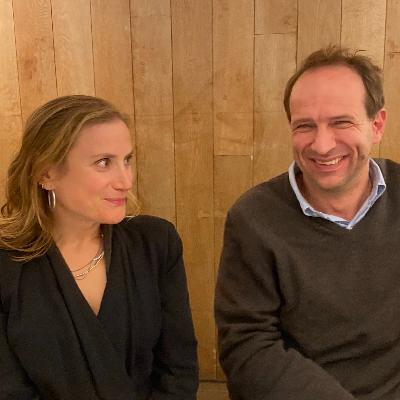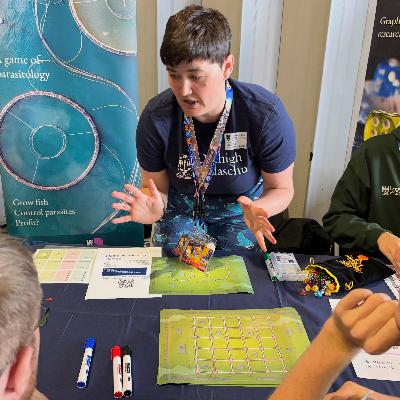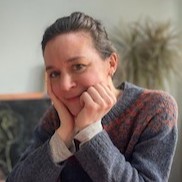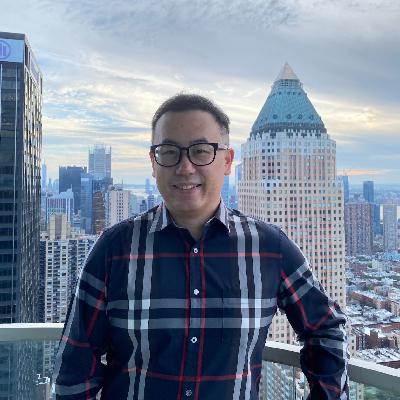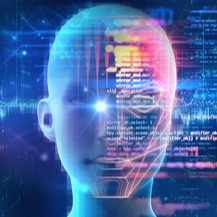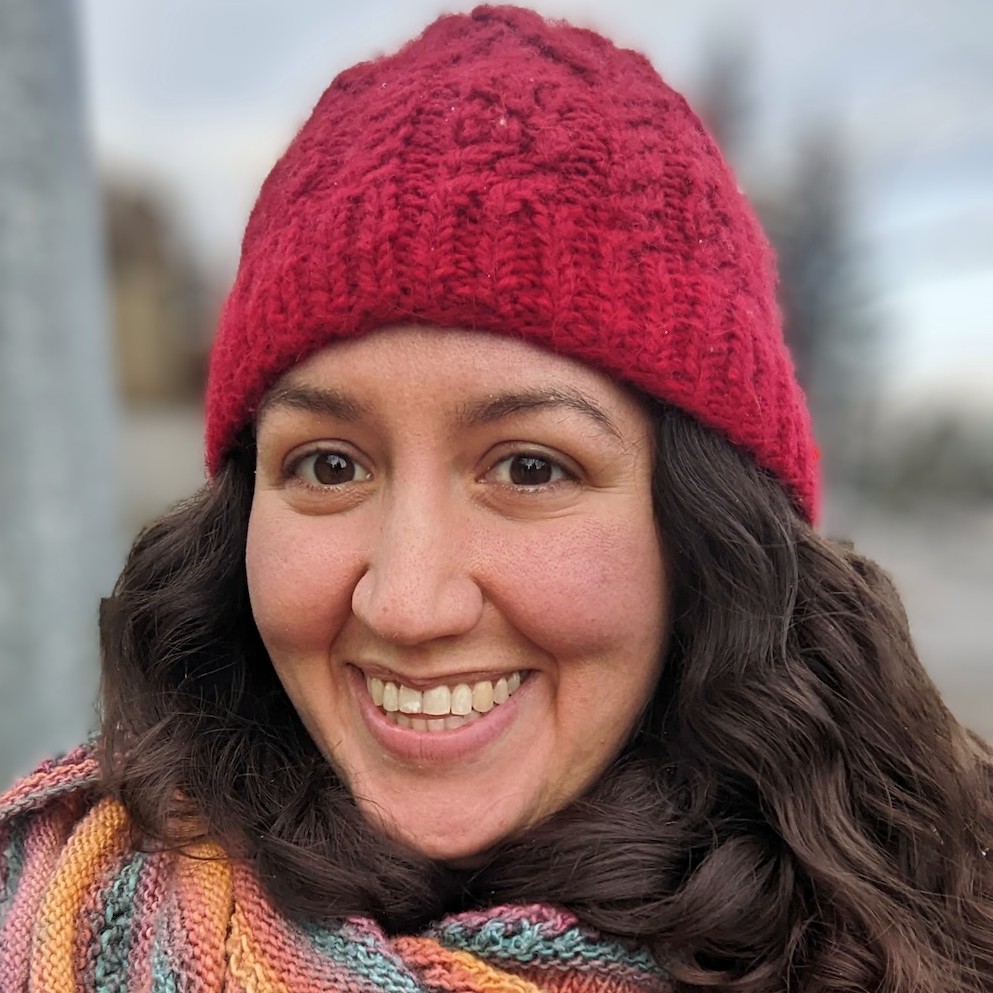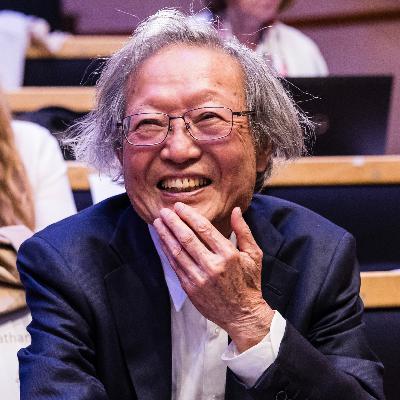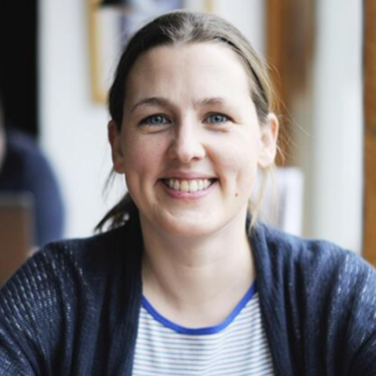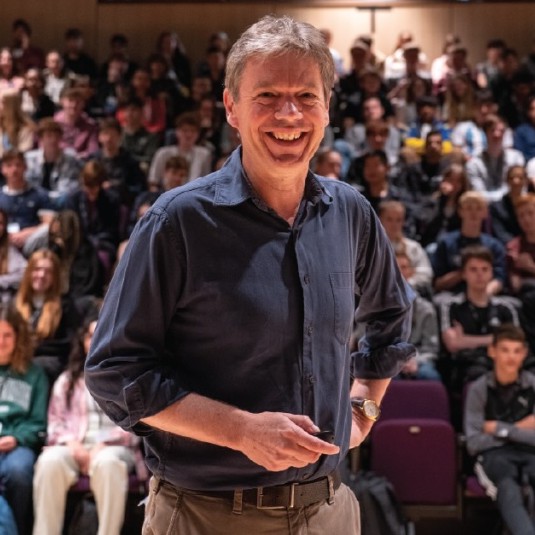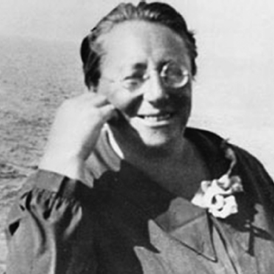Discover Maths on the Move
Maths on the Move

Maths on the Move
Author: plus.maths.org
Subscribed: 65Played: 418Subscribe
Share
© Copyright 2022 All rights reserved.
Description
Maths on the Move, the podcast from plus.maths.org, brings you the latest news from the world of maths, plus interviews and discussions with leading mathematicians and scientists about the maths that is changing our lives. Hosted by Plus editors Rachel Thomas and Marianne Freiberger.
114 Episodes
Reverse
I
Imagine if your doctor had a digital model of your heart, personalised to you and updated with your latest medical information. This isn't science fiction – this revolutionary healthcare is being tested now. In this podcast we speak to Steven Niederer, who leads the CVDNet project developing and testing these ideas, and his colleague Richard Wilkinson, from the University of Nottingham.
Richard is one of the organisers of the long research programme, Representing, calibrating & leveraging prediction uncertainty from statistics to machine learning (RCL), held earlier this year at the Isaac Newton Institute for the Mathematical Sciences (INI).
We first spoke to Steven back in 2019 when he helped organise the Fickle Heart programme at the INI. In this podcast, Richard and Steven tell us about digital twins, digital hearts, and how the RCL programme and CVDNet build on the work started back in 2019 with the Fickle Heart programme.
You can find out more about some of the ideas discussed in this podcast in these short introductions:
Maths in a Minute: Mathematical models
Maths in a Minute: Differential equations
Maths in Minute: Machine learning
This content was produced as part of our collaborations with the Isaac Newton Institute for Mathematical Sciences (INI) and the Newton Gateway to Mathematics.
The INI is an international research centre and our neighbour here on the University of Cambridge's maths campus. The Newton Gateway is the impact initiative of the INI, which engages with users of mathematics. You can find all the content from the collaboration here.
"I have learnt that even if you are not a master in mathematics and science you are still able to grasp the essence."
This is Céline Broeckaert talking, believe it or not, about the famously difficult theory of quantum mechanics. Céline knows what she's talking about. She's not a physicist, in fact she's a Romance languages scholar, author and playwright. Yet she's written a book about quantum mechanics together with her physicist husband Frank Verstraete, Leigh Trapnell Professor of Quantum Physics at the University of Cambridge. The book is called Why Nobody Understands Quantum Physics - and everyone needs to know something about it. And it's good timing: quantum mechanics celebrates its 100th birthday this year.
In this episode of Living Proof we talk to Céline and Frank about the book, what it was like writing it, and what their different backgrounds brought to the project.
We met Céline and Frank at the Isaac Newton Institute for Mathematical Sciences in Cambridge, where Frank is co-organising the research programme Quantum field theory with boundaries, impurities, and defects.
For a brief introduction to quantum mechanics see A ridiculously short introduction to some very basic quantum mechanics. To find out more about the overlap of maths and art, see here.
This content forms part of our collaboration with the Isaac Newton Institute for Mathematical Sciences (INI) – you can find all the content from the collaboration here.
The INI is an international research centre and our neighbour here on the University of Cambridge's maths campus. It attracts leading mathematical scientists from all over the world, and is open to all. Visit www.newton.ac.uk to find out more.
You are blue, and are surrounded by other blue people: swirling together in a dot, identical and indistinguishable. From somewhere above you hear the ticking of a clock, and suddenly find yourself and some of your fellows pulled upwards, sucked through a tube arcing high above...
Intrigued? That is a description of one of Jess Enright's adventures in her mathematical models. This is an exciting new approach that researchers are using to invite people into the worlds of their models, both to communicate their research to the people outside of academia, but also for the researchers themselves to reflect on what aspects of reality these models actually do, and don't, describe.
These adventures in model land build on the work of Erica Thompson in her book, Escape from Model Land: how mathematical models can lead us astray and what we can do about it. Any mathematical description of a process in the world around us is a mathematical model: whether it's describing the processes in our climate, the spread of a disease through a population or the movement of water across a landscape. They are incredibly useful and key to research in modern mathematics and science. But these mathematical models are, by necessity, simplifications of the real world.
Erica's book inspired geoscientist Chris Skinner to use principles of role-playing games to explore and communicate mathematical models. And this approach was a perfect fit with Jess' experience building board games to communicate her research - we event get to play some in this podcast at the huge UK Games Expo in Birmingham earlier this year!
Jess Enright, along with Emma Gort Tarrus, in action at the UK Games Expo in Birmingham earlier in 2025. (Photo: Rachel Thomas)
In this podcast we talk to Jess (a reader in the school of Computing Science at the University of Glasgow and member of the JUNIPER partnership of disease modellers from across the UK), Chris (an independent geoscientist and researcher and a visiting fellow at York St John University)and Erica (Associate Professor of Modelling for Decision Making at University College, London) about their explorations of these ideas.
You can find out more information about the ideas discussed in the podcast here:
Maths in a Minute: Mathematical model – a brief and an accessible introduction to mathematical models and where they are used.
Escape from Model Land: how mathematical models can lead us astray and what we can do about it – Erica's book
Adventures in Model Land– the framework, developed by Chris, Erica and Jess, together with Liz Lewis, Rolf Hut and Sam Illingworth, for exploring mathematical models using table-top role-play games
You can find some of the adventures in model land and other games that Jess took to the UK Games Expo in Birmingham
This podcast is part of our collaboration with JUNIPER, the Joint UNIversity Pandemic and Epidemic Response modelling consortium. JUNIPER comprises academics from the universities of Cambridge, Warwick, Bristol, Exeter, Oxford, Manchester, and Lancaster, who are using a range of mathematical and statistical techniques to address pressing questions about the control of COVID-19. You can see more content produced with JUNIPER here.
There's been a lot of talk recently about whether artificial intelligence is becoming just as good as maths as humans are. But quietly in the background there's been another development regarding the use of computers in maths. It involves proof assistants: computer programmes that can check whether a mathematical proof is correct; whether it can be derived from a set of basic axioms of mathematics using only the rules of logic.
In this episode of Living proof we meet Kevin Buzzard, an expert on proof assistants at University College London. Kevin explains what proof assistants are, how using them is like playing a computer game, and why they turn maths into a highly collaborative pursuit. He also tells us about his effort to get a proof assistant to check one of the most famous results in all of mathematics — Fermat's Last Theorem — and how proof assistants and AI may team up to provide a powerful tool.
We met Kevin in the summer when he was taking part in a research programme called Big Proof at the Isaac Newton Institute for Mathematical Sciences (INI) in Cambridge. This programme, which attracted some of the best minds in modern mathematics, followed on from a pioneering workshop on the same topic which took place at the INI in 2017.
To find out more about the topics mentioned in this podcast, see the following articles:
Proof assistants — This two part article, written by our brilliant summer intern Ben Watkins, is based on the interview with Kevin Buzzard and explores what proof assistants are.
Maths in a Minute: Coding with Lean — Here's a simple walk-through of how to use a proof assitant called Lean.
Pure maths in crisis? — In this article from 2019 Kevin Buzzard explains why he thinks that the standard of proof in research maths might not be as high as mathematicians would like to believe.
How to (im)prove mathematics — This article explores how the simple notion of counting ends in a revolutionary new way of doing maths using proof assistants. This article is based on a talk by Terence Tao at a 2024 workshop at the INI which celebrated the mathematics of Tim Gowers as well as his 60th birthday.
A very old problem turns 30! — This article explores Fermat's famous last theorem as well as the mathematics its proof has given rise to. It comes with a podcast featuring Andrew Wiles, who proved the result, and people who are now working on its legacy.
You can find more background reading in our collection on proof assistants.
This content forms part of our collaboration with the Isaac Newton Institute for Mathematical Sciences (INI) – you can find all the content from the collaboration here.
The INI is an international research centre and our neighbour here on the University of Cambridge's maths campus. It attracts leading mathematical scientists from all over the world, and is open to all. Visit www.newton.ac.uk to find out more.
In this episode of the Living Proof podcast we're delighted to meet Moustapha Fall. Moustapha is the Center President of the African Institute for Mathematical Sciences (AIMS) in Senegal and winner of a prestigious Ramanujan Prize for Young Mathematicians from Developing Countries. He also plays an important role on the international stage as Member-at-Large of the Executive Committee of the International Mathematical Union.
Moustapha talks to us about about the amazing institution that is AIMS, about his outreach activities and advice for budding mathematicians, and about the challenges that face mathematicians in sub-Saharan Africa.
You can find the IMU-ICIAM report on fraudulent publishing, which Moustapha mentions in the podcast, here. The same team of authors has also drawn up recommendations on how to fight fraudulent publishing.
Earlier this year the the anomalous mathematical patterns sci-art competition attracted some jaw-dropping entries. The competition was held in connection to the Stochastic systems for anomalous diffusion research programme which took place at the Isaac Newton Institute for Mathematical Sciences (INI) in Cambridge last year.
In this episode of Maths on the Move we talk to Codina Cotar, who co-organised the INI programme and helped put on the competition. Codina explains the maths which served as inspiration and discusses some of the winning entries. From coffee to quantum mechanics and from dance to diffusion, find out how mathematics, nature and art are inextricably linked.
Note that the in-person exhibition at the INI is now scheduled for March 2026.
The entries discusses in this podcast are shown below. To find out more about some of the mathematical topics mentioned in this podcast see:
The Sci-art competition - This article explores some of the mathematics behind the competition, including randomness, diffusion, and many particle systems.
The Fields Medals 2022: Maryna Viazovska - This article looks at the mathematics of sphere packings, which won a Fields Medal for the mathematician Maryna Viazovska.
Maths in a Minute: Fluid dynamics - A very bried introduction to the mathematics of liquids and gases.
A ridiculously short introduction to some very basic quantum mechanics - This article does what the title suggests.
A brief history of quantum field theory - A deeper look at the theory that arose from quantum mechanics.
Dye Diffusion in Water by Henrique Biasi. Find out more here.
A microcosm of milk by Christian Casaljay. Find out more here.
Work by Lilia Bakanova, which which won the category for textile, sculpture and other medium. Find out more here.
The mathematical area of topology is all about figuring out what truly defines a shape. Famously, topologists consider a coffee cup to be the same as a doughnut because one can be turned into the other without cutting or gluing — what defines and relates these two shapes for a topologist is that they have a single hole.
As you might imagine, if you have ever tried to drink coffee out of a doughnut, topology has traditionally been part of pure mathematics. Topological data analysis (TDA), however, opens up a world of applications by applying ideas from topology to vast data sets, helping us to understand their "shape" and draw out important features.
In this episode of Maths on the Move we talk to algebraic topologist Michael Hill about some of the fascinating uses of topological data analysis — from understanding breast cancer to making sure that voting is fair.
We talked to Michael after he gave a brilliant Rothschild lecture at the Isaac Newton Institute for Mathematical Sciences (INI) in Cambridge. He was at the INI to attend the research programme Equivariant homotopy theory in context.
To find out more about the topics mentioned in this podcast see:
Maths in a minute: Topology — a quick introduction to topology.
Understanding life with topology — a quick introduction to TDA and some of its uses.
Euromaths: Heather Harrington — An episode of our Maths on the move podcast giving and introduction to topological data analysis.
Watch Mike Hill's Rothschild lecture at the INI.
Topology based data analysis identifies a subgroup of breast cancers with a unique mutational profile and excellent survival - The paper by Nicolau, Levine and Carlesson, mentioned by Michael in the podcast, which uses TDA to identify a novel type of breast cancer.
The Data and Democracy Lab — mentioned by Mike in the podcast.
Also, here is an image illustrating the intuition behind topological data analysis. As discs drawn around a bunch of points arranged in a circle increase in radius, they eventually overlap to form a ring, and later overlap to form a single blob.
This podcast forms part of our collaboration with the Isaac Newton Institute for Mathematical Sciences (INI) – you can find all the content from the collaboration here.
The INI is an international research centre and our neighbour here on the University of Cambridge's maths campus. It attracts leading mathematical scientists from all over the world, and is open to all. Visit www.newton.ac.uk to find out more.
Welcome to the new season of the Maths on the Move podcast!
We start the season with theoretical physicist David Tong of the University of Cambridge looking at an important milestone in the history of physics: the 100th birthday of quantum mechanics which we celebrate this year. David tells us why a new theory was needed, which of the many strange aspects of quantum mechanics is, in his opinion, the most significant, and that Erwin Schrödinger had a tendency to be grumpy.
David also tells us how quantum mechanics links to quantum field theory, the language in which all of modern physics is formulated, and reveals some mysterious connections between very different areas of physics — such as the theory of black holes and fluid mechanics. Join us in a wavy dance from the very small to the very large!
For some background and further reading and viewing see:
David Tong's series of text books
A ridiculously short introduction to some very basic quantum mechanics
A brief history of quantum field theory
Heisenberg's uncertainty principle
Maths in a Minute: Black holes
What is general relativity? Plus asks David Tong
Sean Carroll's Mindscape podcast featuring David Tong
We may not notice it, but mathematics impacts our lives on a daily basis. Mathematical models inform policy decisions around the economy and public health. They are used to understand climate change and how to respond to it. They are vital in the design of public buildings and spaces. They are even used to try and prevent crime.
It seems reasonable, then, that the mathematical models should reflect people's interaction with each other and their environment, and that they should take account of people's perspectives and priorities. In this episode of Maths on the Move we talk to Liz Fearon, an epidemiologist at University College London, about a pioneering new project which aims to involve people in the production of mathematical models from the start, treating them as valued and equal members of the research team. Liz tells out about the motivation behind the project, how it works, and what she hopes to achieve.
To find out more about topics mentioned in this podcast see:
Co-production of mathematical models — the article accompanying this podcast
The website of the COMMET project
Disease modelling for beginners — our introduction to some basic concepts in infectious disease modelling
The inequalities of COVID-19 — our article exploring the role of the pandemic in amplifying social inequalities
Tracing mpox — our article about modelling the spread of mpox.
This podcast is part of our collaboration with JUNIPER, the Joint UNIversity Pandemic and Epidemic Response modelling consortium. JUNIPER comprises academics from the universities of Cambridge, Warwick, Bristol, Exeter, Oxford, Manchester, and Lancaster, who are using a range of mathematical and statistical techniques to address pressing questions about the control of COVID-19. You can see more content produced with JUNIPER here.
On May 30th 2024 seminar goers at Princeton University witnessed a thrilling moment. The mathematician Zhouli Xu of the University of California, LA, announced that, together with colleagues he had sorted out the 126th dimension. Not in general, but in regards to a problem that has taunted mathematicians since the 1960s. The problem involves strange shapes and is called the Kervaire invariant problem, after the mathematician Michel Kervaire.
In this episode of Maths on the Move Zhouli takes us on a trip into higher dimensions, giving us a gist of what this long-standing problem is all about and retracing some of the long, and sometimes arduous, journey towards a proof. We met Zhouli when he visited our neighbours at the Isaac Newton institute for Mathematical Sciences (INI) in Cambridge to take part in a research programme called Equivariant homotopy theory in Context.
To find out more abut the topics discussed in this podcast see:
Maths in a minute: Topology
The hypersphere in four dimensions
Telescope topology
This content forms part of our collaboration with the Isaac Newton Institute for Mathematical Sciences (INI) – you can find all the content from the collaboration here.
The INI is an international research centre and our neighbour here on the University of Cambridge's maths campus. It attracts leading mathematical scientists from all over the world, and is open to all. Visit www.newton.ac.uk to find out more.
The capabilities of artificial intelligence may appear to be galloping ahead, but there are still many challenges that need to be solved. Last month we joined members of the Maths4DL research project for a hackathon — an intensive two-day brainstorming session designed to figure out how one might teach machine learning techniques for solving differential equations and how best to test those techniques.
In this episode of Maths on the Move, Maths4DL members Yolanne Lee from University College London, Georg Maierhofer from the University of Cambridge, and Chris Budd OBE from the University of Bath tell us all about the hackathon, the science behind it, and what it was like to participate in those ambitious but exciting 48 hours.
For a brief introduction to machine learning see Maths in a minute: Machine learning and neural networks and for a brief introduction to differential equations see Maths in a minute: Differential equations. You might also like:
Our podcast featuring Yolanne Lee talking about her work as a Maths4DL researcher,
Our podcast featuring Georg Maierhofer talking about physics informed neural networks, as well as the accompanying article,
Our article AI and GoPro physics featuring the work of Nathan Kutz who is mentioned in this podcast.
This content is part of our collaboration with the Mathematics for Deep Learning (Maths4DL) research programme, which brings together researchers from the universities of Bath and Cambridge, and University College London. Maths4DL aims to combine theory, modelling, data and computation to unlock the next generation of deep learning. You can see more content produced with Maths4DL here.
Imagine we could have a digital version of our entire body which could help us, and our doctors, decide what life style is good for us, predict which diseases we might get, and how to best treat them? In short, what if we could all have our very own digital twin?
The idea isn't quite as sci-fi as it sounds. A gigantic scientific effort called the Physiome Project is about piecing together a mathematical description of the entire physiology of the human body. Once this has been achieved to a sufficient level digital twins will be a spin-off.
In this podcast we revisit an interview we did back in 2019 with Steven Niederer, who was then Professor of Biomedical Engineering at King's College London but has since moved to a new position at Imperial College London as Chair of Biomedical Engineering. Niederer told us about the physiome project, about how the fitbits many of us own are a very first step towards a digital twin, and about how you can model individual human organs such as the heart. We also challenge ourselves to explain differential equations in one minute.
You can find out more about maths and medicine, differential equations and mathematical modelling on Plus.
We met Niederer in 2019 when he helped to organise a research programme at the Isaac Newton Institute for Mathematical Sciences in Cambridge.
The music in this podcast comes from the artist Oli Freke. The track is called Space Power Facility.
This podcast forms part of our collaboration with the Isaac Newton Institute for Mathematical Sciences (INI) – you can find all the content from the collaboration here.
The INI is an international research centre and our neighbour here on the University of Cambridge's maths campus. It attracts leading mathematical scientists from all over the world, and is open to all. Visit www.newton.ac.uk to find out more.
In this podcast we hope to give you some interesting information. This information is encoded in terms of 0s and 1s – the classical bits in your computer or phone. But what if instead we were using a quantum computer? Then we'd be dealing with quantum bits, or qubits, opening up exciting new possibilities. And quantum information theory is the area of mathematics that explores how we can do that.
Adina Goldberg was one of the participants at a recent research programme in this area at the Isaac Newton Institute for Mathematical Sciences (INI). In this episode of Living proof, our podcast produced in collaboration with the INI, we speak to Adina about her work and how her intriguing motto – "the meaning is in the arrows" – applies to her research, her career path, and the way she looks at life.
You can find out more about quantum information in this short introduction and delve into the details of information theory in this collection of content.
Make sure you visit Adina's website to find out more about her work and her fascinating career. Since we recorded this podcast Adina has finished her PhD – congratulations Dr Goldberg!
This podcast forms part of our collaboration with the Isaac Newton Institute for Mathematical Sciences (INI) – you can find all the content from the collaboration here.
The INI is an international research centre and our neighbour here on the University of Cambridge's maths campus. It attracts leading mathematical scientists from all over the world, and is open to all. Visit www.newton.ac.uk to find out more.
From sunny parks to banquets in castles – come with us on an exciting adventure in Oslo as we join the celebrations for the 2025 Abel Prize! We meet Masaki Kashiwara, winner of this year's prize, who tells us about the importance of collaborations and creating new things. Ragni Piene, previous chair of the Abel Prize Committee, gives us a look behind the scenes. And Andrea D'Agnolo, one of Masaki Kashiwara's most recent collaborators, celebrates his friend and fellow bridge-builder between mathematical worlds.
You can read more about Masaki Kashiwara's work in our article, and you can listen to a recent podcast where we spoke to Helge Holden, Chair of the Abel Prize committee, about the Abel Prize and about Masaki Kashiwara's work. And can you see all our reporting on every Abel Prize since it was first awarded in 2003 here.
Thanks to the musicians Peter Baden, Astrid Garmo and Liv Lande for playing such wonderful music in the Abel Prize ceremony which you'll hear a little taste of in this podcast. And thank you to all the Abel Prize team, including Unni Irmelin Kvam, Pål Petterson, Marina Tofting and Anne Lise Stranden for inviting us to Abel Week and for such a fantastic celebration!
Photo of Masaki Kashiwara is copyright Thomas B. Eckhoff/DNVA and used with permission
Sarah Hart is a mathematician who is interested, not just in the maths itself, but also its connections to other areas of culture and art. She's done an amazing number of things throughout her career — from research in pure mathematics and heading up a maths department, to being the first woman Gresham Professor of Geometry and President of the British Society for the History of Mathematics.
Sarah has also written a fascinating book, called Once upon a time: The wondrous connections between mathematics and literature, and she gave a talk at this year's Cambridge Festival, with the intriguing title Life in Lilliput – The Mathematics of Fictional Realms. The talk was the contribution to the Festival of the Isaac Newton Institute for Mathematical Sciences (INI). Sarah also participates in the Modern History of Mathematics research programme that is currently taking place at the INI.
In this episode of Living proof, produced in collaboration with the INI, Sarah tells us about the many things she has done and how they all fit together, and gives some advice for budding mathematicians of all ages: keep pursuing all the things you love doing, and one day it may turn out that they all fit together.
To find out more about some of the things mentioned in this podcast see the fllowing links:
Sarah Hart: Once upon a prime — In this episode of our Maths on the Move podcast Sarah talks about her book and the connections between maths and literature.
Maths in three minutes: Groups — This article gives a brief introduction to Sarah's research area.
Life in Lilliput – The Mathematics of Fictional Realms — Click this link to watch a recording of Sarah's Cambridge Festival talk at the INI.
Sarah Hart at Gresham College — Click this link to watch Sarah's Gresham College public lectures.
This podcast forms part of our collaboration with the Isaac Newton Institute for Mathematical Sciences (INI) – you can find all the content from the collaboration here.
The INI is an international research centre and our neighbour here on the University of Cambridge's maths campus. It attracts leading mathematical scientists from all over the world, and is open to all. Visit www.newton.ac.uk to find out more.
One thing we all have in common is that we did maths at school. Those of us from the English speaking world most likely also did Shakespeare at school. Do these two things have anything in common?
It turns out that they do! Our friend Rob Eastaway, author and Director of the amazing Maths Inspiration project, has written a book called Much Ado About Numbers: Shakespeare's mathematical life and times. In this episode of Maths on the Move, Rob tells us about some of the many instances of maths appearing in Shakespeare's work. He also tells us about the mathematical climate that Shakespeare lived in. Among other things, it included a mathematical revolution, saw music as a subfield of maths, and gave rise to the word "trivial" so much beloved by mathematicians. The book is out in paperback now.
To find out more about some of the topics mentioned in this episode, see the following links:
The fabulous positional system is an article exploring the nature of our number system.
Rob's Gresham College lecture explores some of the topics mentioned in this podcast and in his book.
Maths Inspiration runs inspiring and interactive maths shows for teenagers.
Finally, here are reviews of some of Rob's books:
The hidden mathematics of sport (with John Haigh)
Maths for mums and dads (with Mike Askew)
More maths for mums and dads (with Mike Askew)
How long is a piece of string? (with Jeremy Wyndham)
Mindbenders and brain teasers (with David Wells)
How to take a penalty (with John Haigh)
How many socks make a pair?
Every now and again, and more often than you'd think, the work of mathematics overlaps with the world of theatre and film.
This happened again recently when the Isaac Newton Institute for Mathematical Sciences (INI) organised a staging of the play Diving into math with Emmy Noether. Noether was a pure mathematician whose results made waves far beyond her field. Albert Einstein called her a "creative mathematical genius".
The play is produced by Portrait Theater Vienna in co-operation with Freie Universität Berlin, directed by Sandra Schueddekopf, and features Anita Zieher as Emmy Noether. It was put on as part of the Modern History of Mathematics research programme that is currently taking place at the INI and the Inclusivity in the Mathematical Sciences workshop that was organised by the Newton Gateway to Mathematics in March 2025.
In this episode of Maths on the move we talk to historian of mathematics David E. Rowe, who provided scientific advice for the play, about the life and work of Emmy Noether, and about what it's like putting mathematics on stage.
You might also want to read our article Emmy Noether: A creative mathematical genius.
This content was produced as part of our collaborations with the Isaac Newton Institute for Mathematical Sciences (INI) and the Newton Gateway to Mathematics.
The INI is an international research centre and our neighbour here on the University of Cambridge's maths campus. The Newton Gateway is the impact initiative of the INI, which engages with users of mathematics. You can find all the content from the collaboration here.
Last Wednesday, March 26, 2025, this year's Abel Prize was awarded to the Japanese mathematician Masaki Kashiwara. The Abel Prize is one of the most prestigious honours in mathematics. It is awarded every year by the Norwegian Academy of Science and Letters and comes with a prize money of over £550,000.
In this episode of Maths on the Move we talk to Helge Holden, Chair of the Abel Prize Committee. Helge tells us about this year's winner, the history and purpose of the Prize, and how the winners are chosen. He also tells us why good mathematicians are needed in all sectors of science and beyond, and talks about the tragic story of the mathematician Niels Henrik Abel, after whom the Prize is named.
To find out more about some of the topics mentioned in this episode, see:
The Abel Prize 2025: Masaki Kashiwara - An accessible look at some of Kashiwara's mathematics.
The Chern Medal 2018: Masaki Kashiwara - Another look at Kashiwara's work written on the occasion of his winning the Chern Medal in 2018.
What are groups and what are they good for? - An episode of the Maths on the Move podcast which explores group theory.
Stubborn equations and the study of symmetry - An article which touches one of Niels Henrik Abel's most famous results.
Journal für die reine und angewandte Mathematik - Also known as Crelle's journal, this publication is mentioned in the podcast.
The UK government has recently pledged to put around £14 billion into supporting the development of artificial intelligence over the next few years. But because AI comes with perils as well as promises, careful policy decision are going to be crucial. In order to make such decision in an informed way, politicians need to interact with the mathematicians and scientist who develop AI.
In this episode of Maths on the Move we talk to mathematician Chris Budd who recently went to Parliament for something called Evidence Week, where he and other AI researchers talked with MPs and Peers from the House of Lords. Chris tells us about the discussions he had with politicians — about the worrying issue of bias in AI, its promising applications, for example in the medical arena, and also about the fact that AI is built on mathematics. A strong maths education, starting at primary school, is therefore essential if we're going to make the best of AI in the future.
Chris is Professor of Applied Mathematics at the University of Bath, co-lead of the research project Maths4DL, and Director of Knowledge Exchange for the Bath Institute for Mathematical Innovation. He attended Evidence week with a team of researchers which included Yolanne Lee, a Maths4DL PhD student who recently featured in another Maths on the Move episode. The image above shows, from left to right, Dáire O’Kane (Maths4DL), Jenny Power (IMI), Yolanne Lee (Maths4DL), and Alexandra Freeman, Baroness Freeman of Steventon.
To find out more about some of the topics discussed in this episode see
AI be the judge: The use of algorithms in the criminal justice system
Can AI help with breast cancer screening?
Maths4DL AI policy brief: Black boxes of AI - watch maths open them
This podcast was produced as part of our collaboration with the Mathematics for Deep Learning (Maths4DL) research programme. Maths4DL brings together researchers from the universities of Bath and Cambridge, and University College London and aims to combine theory, modelling, data and computation to unlock the next generation of deep learning. You can see more content produced with Maths4DL here.
We kick off our latest series of podcasts with an episode of Living proof, produced jointly with the Isaac Newton Institute for Mathematical Sciences (INI).
This episode is all about the communication of mathematics to the wider world, which is becoming ever more recognised as a priority within the maths community. We talk to Sara Khan, Communications Manager at the INI, about how this renowned research institute supports mathematics communication. And we revisit our interview with Hannah Fry who has just taken up her new role as Professor of the Public Understanding of Mathematics here at the University of Cambridge
As Hannah puts it,
"It's really important that people feel that [mathematics] is being done with them, not to them."
We also find out about Hannah's own research in her previous role as Professor for the Mathematics of Cities at University College London, and hear about her favourite mathematical moment.
To find out more about organisations and events in support of mathematics communication mentioned in this episode, see the following links:
The Mathsci-comm network is funded by an INI Network grant and aims to connect those working in, and with a stake in, communicating complex mathematics and data science to a variety of non-expert audiences. The network is run by the Editors of plus.maths.org, Marianne Freiberger and Rachel Thomas, together with Maha Kaouri from the Newton Gateway to Mathematics
Communicating mathematical and data sciences — what does success look like? was a workshop organised by the Mathsci-comm network, which took place at the INI in November 2024. Hannah Fry announced her move to Cambridge at this event.
The Graduate training workshop for the Mathematical Sciences, organised by the Newton Gateway to Mathematics, took place at the INI in February 2025 and comprised a significant component dedicated to communication, delivered by the Editors of plus.maths.org, Marianne Freiberger and Rachel Thomas, together with Alison Kiddle and Katie Steckles. This followed a pilot event which took place in October 2024.
Talking maths in public (TMiP) is a conference which runs in the UK every two years, for people who work in, or otherwise participate in, communicating mathematics to the public. TMiP 2025 will take place at the University of Warwick on 28th - 30th August 2025, with the option to participate online.
This content was produced as part of our collaborations with the Isaac Newton Institute for Mathematical Sciences (INI) and the Newton Gateway to Mathematics.
The INI is an international research centre and our neighbour here on the University of Cambridge's maths campus. The Newton Gateway is the impact initiative of the INI, which engages with users of mathematics. You can find all the content from the collaboration here.



